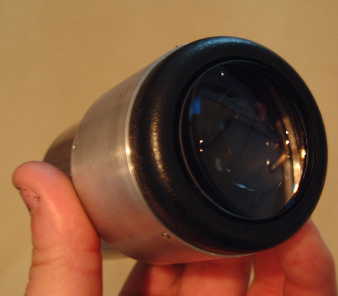| Brand and Model: | Harry Siebert 2" 36mm Observatory Class |
| Price ($USD): | $199.00 |
| Type: | Ultra Wide Angle |
| Focal Length: | 36 mm |
| Barrel Size: | 2" |
| Apparent FOV: | 75.0 degrees |
| Field Stop Dia.: | 0.0 mm |
| Eye Relief: | 22 mm |
| Elements: | 6 |
| Weight (lbs): | 15 oz. |
| Description: | This is the new observatory class 2" which is a superwide angle. Compare this to the Panoptic 35mm. Excellent razor sharp from edge to edge performance on scopes f/4-f/6. Good performance outer edge wise up to f/10. But this is basically a fast scope eyepiece. |

